Rajko Mitić Stadium: Red Star Belgrade (FK Crvena zvezda) & Serbia National Team
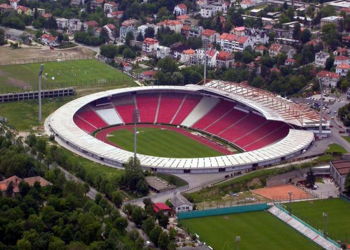
Rajko Mitić Stadium Stadium View From Above - Vlada Marinković [CC BY-SA 3.0], via Wikimedia Commons
Fudbalski klub Crvena zvezda, better known by the English name of Red Star Belgrade, is a Serbian football club based in the country’s capital city of Belgrade. The team is best known for having won the European Cup, now the Champions League, back in 1991. They’re the only Serbian or Yugoslavian team to do so, having also become the only team from those nations to win the Intercontinental Cup that year.
The club plays its games at the Rajko Mitić Stadium, also known as Red Star Stadium. It is named in honour of the club’s former player, Rajko Mitić, and has enough room for more than 55,000 supporters. That makes it the largest stadium in Serbia, which is fitting because the club is also the most popular team in the country. Opened in 1963, it hosted the final of the European Cup in 1973 and some of the matches for the European Championship in 1976.
Stats
| Rajko Mitić Stadium Stats | |
|---|---|
| Year Opened | 1963 |
| Capacity | 53000 |
| Average Attendance | 13566 |
| Record Attendance | 110000 (Red Star v Ferencváros (23/04/1975)) |
| Pitch Size | 110 x 73 (8030) |
| Nickname | Marakana |
| Former Name | Red Star Stadium |
| Owner | Red Star Belgrade |
| Clubs Hosted | Red Star Belgrade, Serbia National Team |
| First Fixture | Yugoslavia v NK Rijeka (1963) |
| Serbia Stats | |
|---|---|
| Year Founded | 1919 |
| Nickname | Оrlovi / Орлови (The Eagles) |
| Rivals | Croatia |
| Kit | Red (Home) / White with Red (Away) |
| Training Ground | Sports Centre of the Football Association of Serbia |
| Record Goalscorer | Stjepan Bobek (38) |
| Record Appearances | Branislav Ivanović (105) |
| Red Star Belgrade Stats | |
|---|---|
| Year Founded | 1945 |
| Nickname | "Звезда / Zvezda (The Star) Црвено-бели / Crveno-beli (The Red-Whites)" |
| Rivals | Partisan Belgrade |
| Previous Stadiums | Avala |
| Kit | Red & White (Home) / Dark Blue (Away) / Red (Third) |
| Shirt Sponsor | Gazprom |
| Team Owner | Svetozar Mijailović |
| Record Goalscorer | Bora Kostić (230) |
| Record Appearances | Dragan Džajić (389) |
Rajko Mitić Stadium Photos
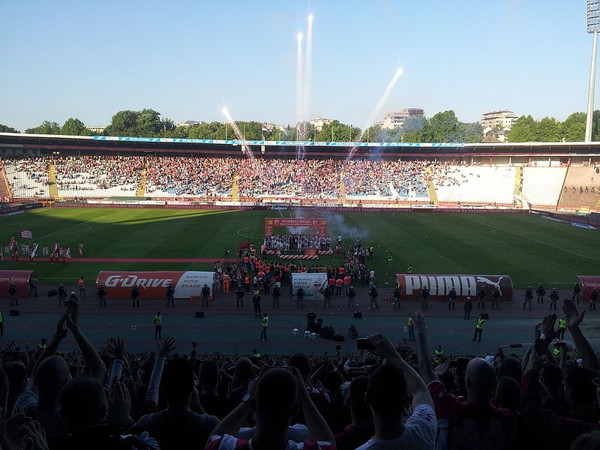
Bobik [CC BY-SA 4.0]
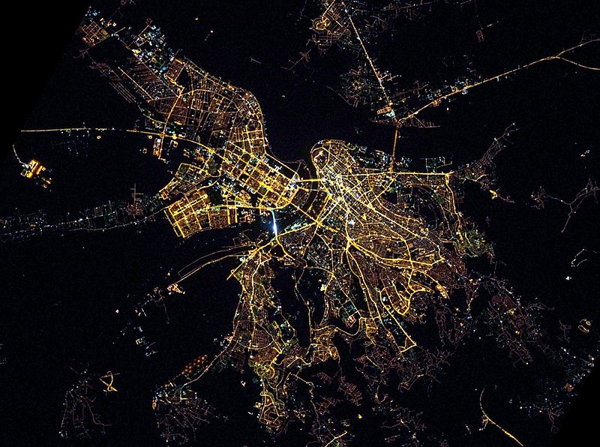
ANATOLY ALEKSEYEVICH IVANISHIN [Public domain]
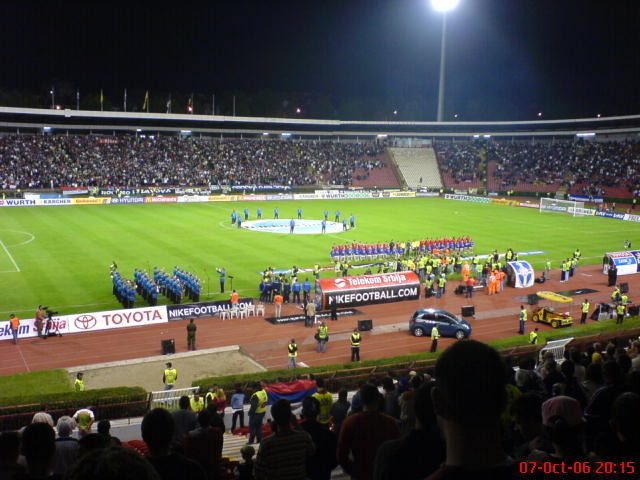
No machine-readable author provided. Pokrajac assumed (based on copyright claims). [CC BY-SA 3.0]
Rajko Mitić Stadium Seating Plan and Where to Sit
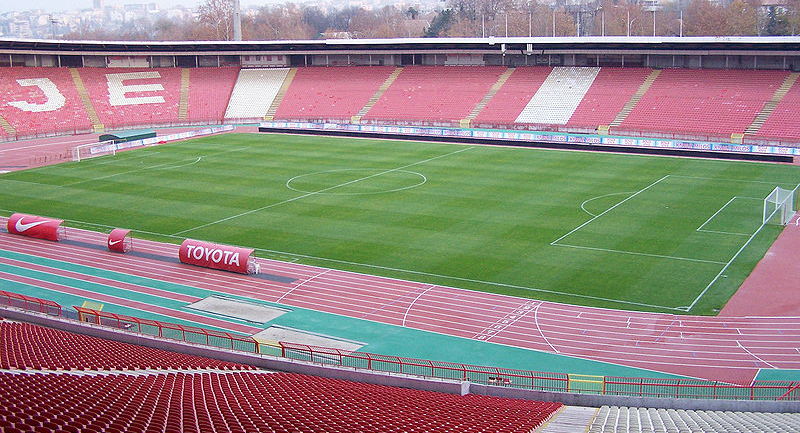
Rajko Mitić Stadium has a bowl design, with one side of the ground being larger than the other. The North Stand and South Stand are located behind each of the goals, with the North Stand being where the club’s most vocal supporters are located.
The South Stand, on the other hand, is where the away supporters tend to be put, which isn’t a bad gig when you consider it’s basically a mirror imagine of the North Stand. The West Stand is the largest section of the ground and it’s where the likes of the changing rooms and dugouts are housed.
Serbia Ticket Prices
When it comes to tickets for Serbia matches, things get slightly more complicated. The pricing for them is often set not by the stadium or the national team but rather by the organising body of the match. For international games, therefore, it can often be UEFA deciding how much people should be asked to pay, so it’s always worth checking out the website of the governing body responsible for the match you want to watch.
How To Get Serbia Tickets
Again, a lot of ticketing is run through the governing body for the competition that you’re hoping to watch a match in. It’s always worth calling the stadium directly, though, because the chances are that it won’t have sold out unless it’s a hugely important match.
Where to Buy
Red Star Belgrade Ticket Prices
Tickets for Red Star matches usually sit at the RSD 100 to RSD 200 range, as long as you just want normal tickets. You can expect to pay much more than that if you want to sit in the hospitality section or if you want to see a high profile game such as one against rivals Partisan Belgrade. That said, ‘much more’ than RSD 200 still won;t be much, since RSD 200 is about £1.50.
How To Get Red Star Belgrade Tickets
The best way to get tickets for matches is online, though do bear in mind that your Serbian will need to be good to do so through the club’s website. The best thing to do is to head along to the ground as you’ll almost always be able to get tickets, with only derbies against Partisan Belgrade tending to come even close to selling out.
Where to Buy
Getting To Rajko Mitić Stadium
Train – If you want to get the train to Belgrade then you’re going to be heading on the Eurostar to Munich before jumping the sleeper to Zagreb. After that it’s a local train Belgrade itself, from which it’s about 3 miles to the stadium. It you don’t want to walk then trams 9, 10 and 14 all stop at the ground from the main railway station.
Bus – Bus number 40 from Takovaska Avenue and number 41 from Trg Studentski Square will both get you to the ground relatively painlessly.
Car – The stadium is located just off the E-75, so that’s what you’ll want to head towards if you’re driving.
By Air – Belgrade Nikola Tesla Airport is pretty much a straight shot along the E-70 and E-75 to the stadium, with the journey likely to take about half an hour.
Taxi – It will take you around twenty minutes to get a train from the centre of Belgrade to Rajko Mitić Stadium and will cost in the region of 741,90 дин.
Parking Near Rajko Mitić Stadium
There is limited parking around the stadium, so driving there isn’t really the most recommended of ideas.
Useful Resources
Rajko Mitić Stadium Hotels
You can get pretty good value in terms of accommodation in Serbia, and these 3 are some of the best of the bunch.

Villa Mystique - £40+
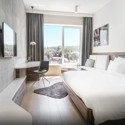
Radisson Collection Hotel, Old Mill Belgrade - £80+
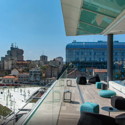
Hilton Belgrade - - £100+
Pubs and Bars Near Rajko Mitić Stadium
There are a lot of pubs in Belgrade, and many of them have an English vibe too, so you should feel at home here.
The Three Carrots
Beer Pong Bar
Marshall Pub
Facilities
The stadium is one of the best in Serbia, with facilities that match that honour. It might not be as impressive as the very best grounds in England, but it’s better than more of the lower league ones.
Hospitality
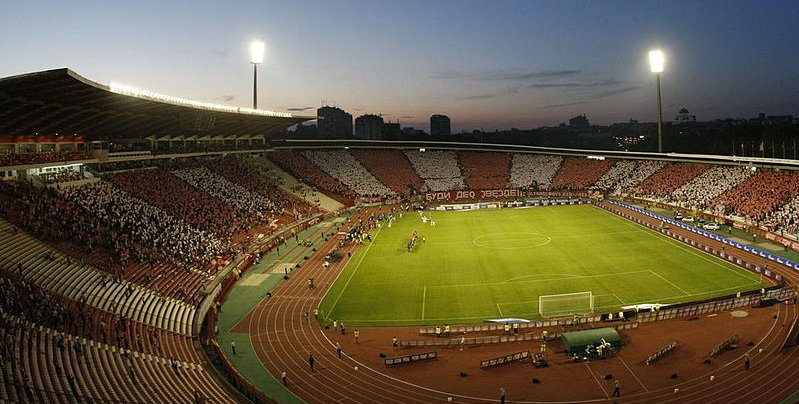
There are numerous hospitality options available to visitors to Red Star’s stadium. The main hospitality section is in the West Stand, which also has the benefit of almost entirely being covered with a roof in case the weather turns nasty.
The central box is named Five Crvena zvezda’s Stars and is split up into five sections, each named after a former player and offering a differing level of hospitality.
Private Hire
It’s common for clubs with decent hospitality facilities to offer them out for private hire, with Red Star following that pattern.
Stadium Tours & Museum
Tours are available and they last 45 minutes, costing 1000RSD for adults and 500RSD for kids – that’s about £7 and £3.50. There is a museum on site too, which you can visit from 9am for about £1.50.
About Serbia
As you might have picked up on from reading the rest of this page, the history of the Serbian national team is a complicated one. There was a Football Federation formed in 1919 in Zagreb that represented the Kingdom of Serbs, Croats and Slovenes. It was renamed as Yugoslavia in 1929 and the head of the country’s FA was moved to Belgrade. The national team of Yugoslavia then appeared in the World Cup of 1930, finishing third. In the years that followed there was a general feeling of being settled for Yugoslavia to the outside world, but internally things were never that simple.
In the 1990s Yugoslavia was dissolved and the Federal Republic of Yugoslavia remained, though was not allowed to compete in Euro ’92. It consisted of Serbia and Montenegro and played its first official game as a country in 1994. Montenegro didn’t declare its independence from Serbia until 2006, so does the history of the country’s football team date back to 1919 or 2006? If the former then their finest achievement in the World Cup was that of 1930 and in the European Championship was two runners-up spots in 1960 and 1968, whilst it the latter then they’ve not done particularly well in either the World Cup or the Euros.
About Red Star Belgrade

As the Second World War was coming to its climax a group of young men from the Serbian United Antifascist Youth League decided to create a Youth Physical Culture Society. That was the basis for Red Star Belgrade, which was officially formed on the 4th of March 1945. All pre-war Serbian clubs were abolished in 1944, so Red Star was created out of the remnants of the city’s two most popular teams, SK Jugoslavija and BSK Belgrade. Discussion surrounding possible names for the club were long, with Red Star eventually decided upon over alternatives such as Blue Star and the People’s Star.
The club enjoyed success almost immediately, including victories in the Yugoslav Championship, the Danube Cup and the Serbian Championship. Perhaps most English supporters know the name of Red Star Belgrade because they were the club that Manchester United played in the European Cup quarter-finals in 1958, with the plane carrying the Busby Babes crashing on the way home, resulting in the deaths of many of the players. The club’s biggest achievement outside of Serbia came in the 1991-1992 season when they went unbeaten during their European Cup campaign, defeating Marseille in the final to lift the trophy.
Rajko Mitić Stadium History
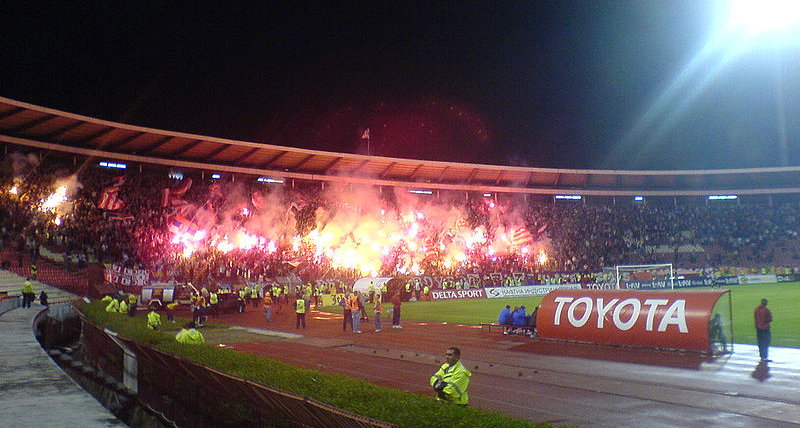
Whilst Rajko Mitić Stadium has been the club’s home since it opened its doors for the first time in 1963, it only took on the name of the club’s former player in 2014. It had an unofficial capacity of 110,000 in the early years, earning it the nickname of the Marakana after the Maracanã Stadium in Brazil. The capacity was reduced during the 1990s when UEFA rules dictated that standing areas were no longer allowed, so the ground was renovated in order to ensure more spectator comfort and safety was made a priority. Over the years more and more changes have been made to the ground as it has struggled to conform with both new rules and modern designs.
It’s not just in the stands where improvements have been made. In 2008 the pitch was entirely reconstructed in order to introduce under-soil heating and a superior drainage system. As a result, the club took the opportunity to install more modern turf. They also improved the club’s training ground at the same time, largely because it was convenient as it’s located right next to the stadium. The stadium is considered to be one of the most intimidating in world football on occasions when it is sold out, if for no other reason than the continuous bowl seating allows supporters to encourage each other to sing and chant.
There was a stadium opened at the same site as the current ground stands back in 1927, belonging to SK Jugoslavija. It was signed over to Red Star after the war and was knocked down in 1959, with the new ground being build over the following three years.
Future Developments
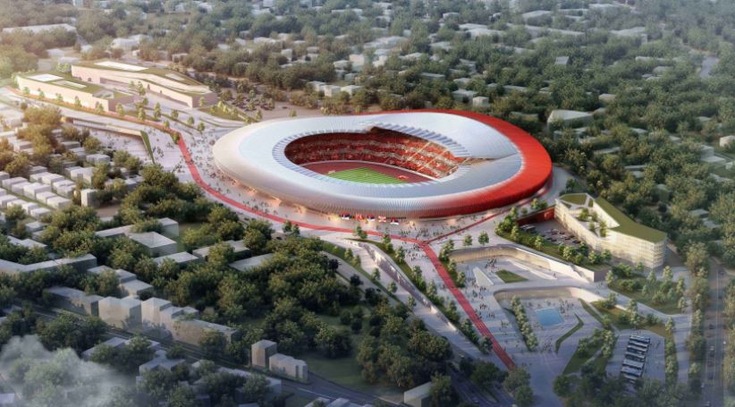
The Red Star board proposed a new ground be built on the site of the Rajko Mitić Stadium. The main structure will be in the shape of a 5-pointed star in honour of the club’s name, with hotels, fitness centres and shopping areas also built in the surrounding location. It is meant to cost around €600 million to build, but at the time of writing nothing has been started.
